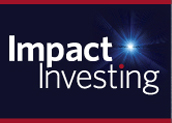FA: Can you briefly discuss the four categories that are part of your platform—values alignment; environmental, social and governance (ESG) integration; sector investing; and impact investing?
Irby: In order to create a platform that was accessible for the wide range of investors that we deal with, we needed to think more broadly than the way some people define impact investing. Values alignment, sometimes known as socially responsible investing, can include positive and negative screening. ESG integration tends to look at integrating those elements into the financial due diligence of companies as portfolio managers are making their selections. Sector focus tends to be more thematic, such as renewable energy or water, agriculture, community development. These first three categories in our framework focus on public equity and public debt. We put a line between that and impact investing and all of our private equity/private debt opportunities we classify in the impact investing space.
FA: Are the private equity and private debt offerings available to individual investors?
Irby: Yes, absolutely for those that are qualified appropriately depending upon the product. Most of them would need to be accredited or qualified for most of those products that are available in the space. We hope that over time more products become available which don’t require that.
FA: What is the platform’s breakdown in terms of asset classes and themes?
Irby: I would say the majority of the products that are currently on the platform are the mutual funds, ETFs, SMAs and UITs. Most of them do focus in that public equity/public debt space. A lot of them have an environmental bent, but we also do have quite a number that have a social or a governance-oriented bent. There is also probably a heavier weight on equity-focused products than debt-focused products.
FA: What about within the impact investing category?
Irby: The ones we see tend to be more on the private equity side. There are also quite a number of private debt investments. Many of them have been historically around the microfinance space and the SME [small and medium enterprise] space, and also community development. But we see quite a range. There’s a pretty broad spectrum of themes. One of the challenges within that category is that a lot of the funds that are there tend to be small, may not have a long track record and they tend to be fairly geographically and/or thematically fragmented. In order to find those that are appropriate for our clients and our platform, we have to think carefully about balance across those areas.
FA: How is the platform marketed?
Irby: We’ve really been interested in driving the platform through the advisors. This allows us to help educate them as part of the process and to help them understand what’s available and where they can find resources to learn more about both the space and the products that are available. It enables them to take it out to clients who may have an interest in the space and the products. We have focused our energy on creating an internal portal that is accessible to advisors.

